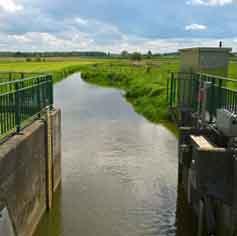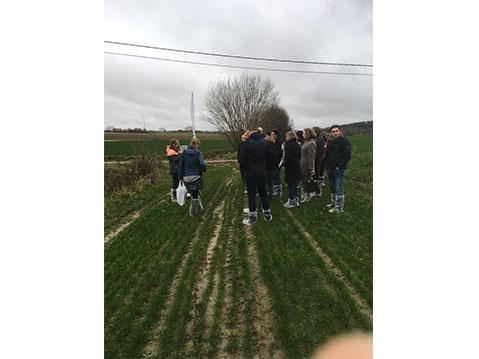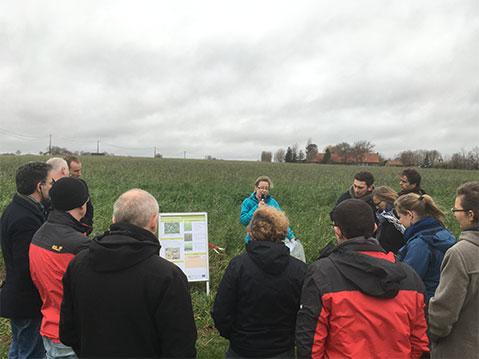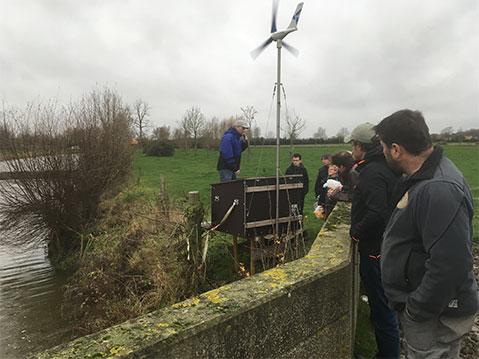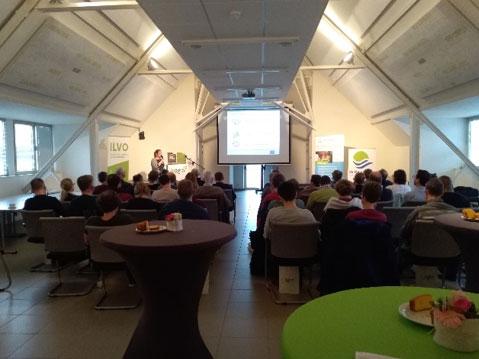Sampling campaigns by the local environmental agency VMM and the local drinking water company De Watergroep during the past spring and summer show that the water quality in the Belgian Action lab is not good. The substance tests reveal that between 10 and 15 substance residues were exceeding the drinking water treshold of 0.1 μg / l. The found concentrations of the active substances were presented to the farmers in the action lab for each monitoring location
The local drinking water company de Watergroep closely monitors the water quality of the different catchments for drinking water extraction areas in the region, among which the Bollaertbeek, the Kemmelbeek and the Blankaartvijver. They take weekly samples just before the water ends up in their collection basins. The recovered concentrations of active substances are much higher in the Bollaertbeek action lab than in the nearby catchments of the Kemmelbeek and the Blankaartvijver. The catchment of the Bollaertbeek has more intensive crop production agriculture than the other catchments, what is reflected in the results of the monitoring.
The day started with a short presentation of the WaterProtect project by the project coordinator, Piet Seuntjens (VITO). Els Belmans from ILVO continued with a presentation on water governance. Then, the governance approach in the Belgian, Irish and Danish Action Lab were presented by the respective action lab leaders.
After these presentations, ideas on water governance were exchanged in discussion groups. Each discussion group dealt with a different topic: How can we involve the different stakeholders? Which incentives exist or can improve the water quality? What economic incentives can be used/developed? And what can we do in the Belgian Action Lab in particular?
The diversity of the participating stakeholders and the presence of partners from other Action Labs resulted in many valuable ideas on water governance, which can be further investigated in the WaterProtect project.
The afternoon field trip to the Belgian Action Lab Bollaertbeek started with a visit of the drinking water production centre of Zillebeke, where drinking water is produced from the Bollaertbeek catchment. Unfortunately the water production centre was not in operation, a consequence of the extreme drought that hit Belgium since the last summer. Nevertheless it was interesting for the participants to see the different treatment and purification steps to make drinking water from the Bollaertbeek water.
The bus then went into the local Bollaertbeek fields to show some of the measures to prevent water pollution by crop protection products that were implemented or will be implemented in the near future.
A grass buffer strip near the Bollaertbeek was visited, followed by green cover crops. Both measures prevent runoff and erosion of crop protection products.
Then, the importance of a safe filling and cleaning place was explained to prevent point pollution of crop protection products. Existing remnant water purification systems were also showed. The next stop during the field visit was a monitoring location, where a continuous sampling installation was demonstrated and the procedure of the sampling campaign by WaterProtect was explained.
The field trip ended at a local farm, where the participants got a presentation of the WaterProtect app, a collaborative tool that shows the water quality monitoring results in an easy and user friendly way. The discussion were the informal discussion were continued while enjoying one of the local farm desserts.

